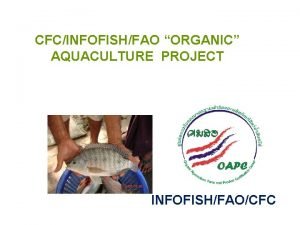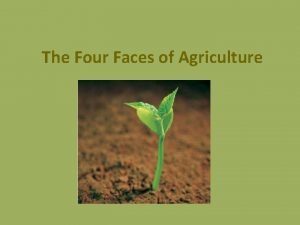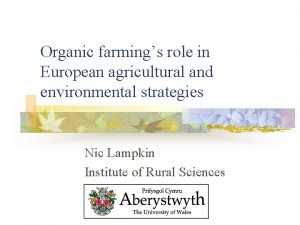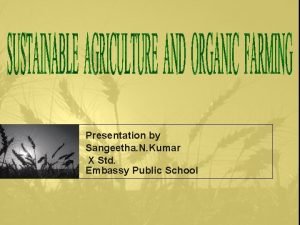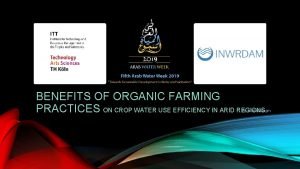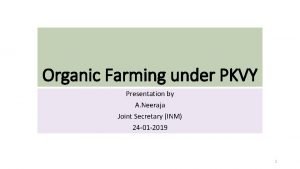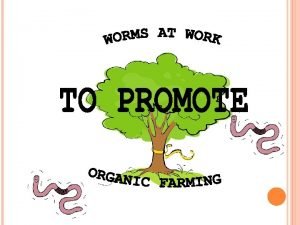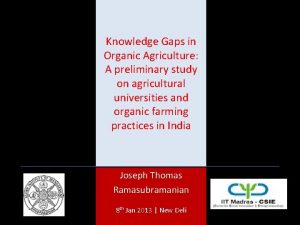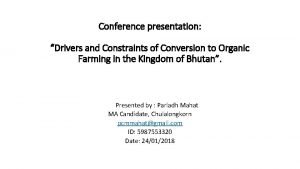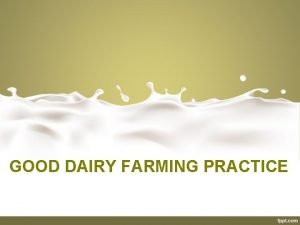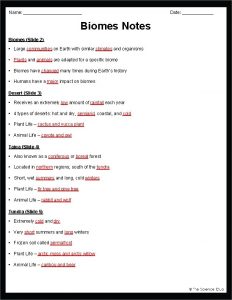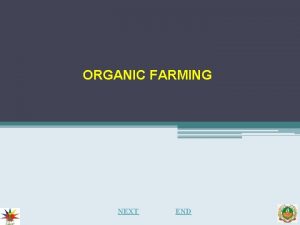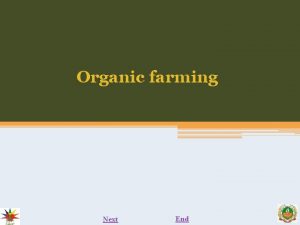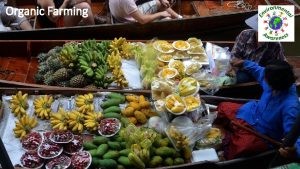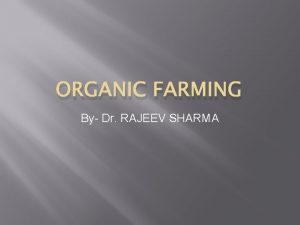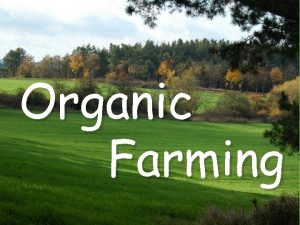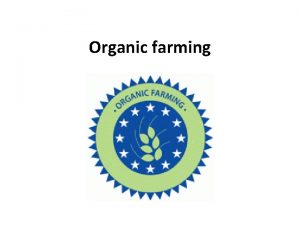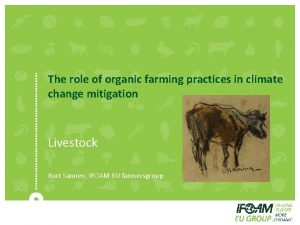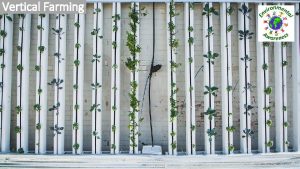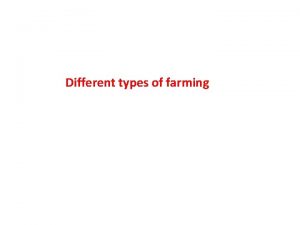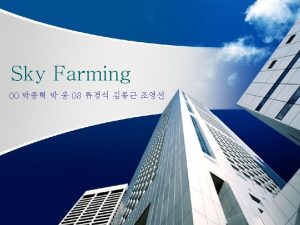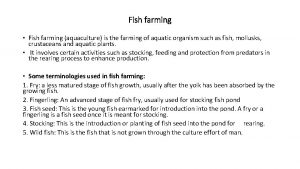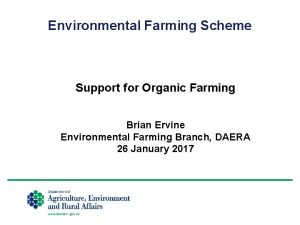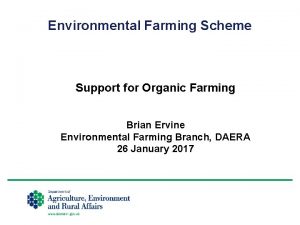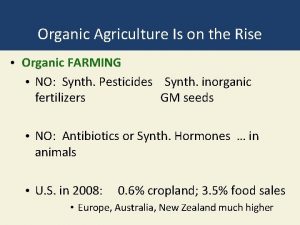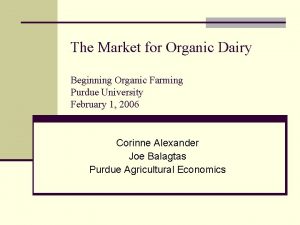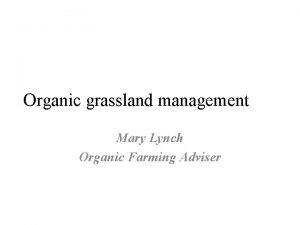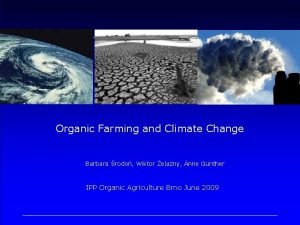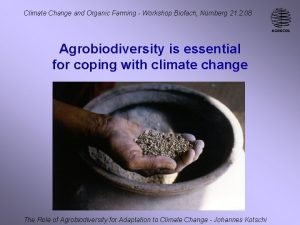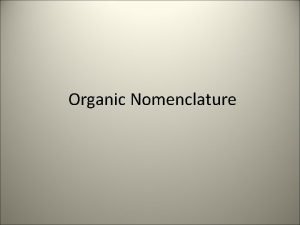The role of organic farming practices in climate
























- Slides: 24

The role of organic farming practices in climate change mitigation Livestock Kurt Sannen, IFOAM EU farmersgroup

Organic farming : agro ecology certified

Vision & strategy processes across the world for sustainable food and farming A global vision: Next phase of organic development An organic vision for Europe in 2030

Where does climate change comes from?


Where does agriculture’s GHG come from?

Food and farming and climate change • Agriculture = 10 % of GHG in EU ‒ CH 4 ‒ N 2 O • Not accounted = • • • Imported feed Fertilisers’ production Transport Land use and land use change Soil carbon losses … One third to half of GHG = linked to food production, processing, transport, distribution and consumption !

Inconvenient truth • no fossil fuel = energy transition • Reduction of livestock = agrifood transition


Systemic approach • Reducing GHG AND • Halt the loss of biodiversity AND • Annimal welfare AND • Chemical pollution AND • Food security AND • Health AND • Food consumption AND • Water resources AND • … Agro ecology has an holistic answer for the transition of food and farming

Agro-ecology Ensure that everyone has access to healthy food, now and in the future, here and in the south, without negative impact on climate, environment, biodiversity. . . • Resilience • Balance between long and short term • Development of agricultural system as a zero-input system • Involve all stakeholders: scientists, producers, processing, consumers, social movements. . . • This means • • • Shorter food chain Closing circles Fair distribution of profit in whole foodchain More efficient use of soil, water and energy Less pressure on environment Food production in balance with ecosystem

Solutions ?


We don’t need end of the pipe solutions ! Classic approach • Manipulation of the rumen flora / rumen fermentation • adjustments of the ration of the catlle • Breeding / selection / management: • Genetic selection ‒ feed efficiency ‒ low methane production • • • Immunization Improve efficiency of production systems (improved fertility, less diseases) Use highly productive animals relatively smaller CH 4 production due to maintenance need / lower fiber content

Sustainable solutions • Less consumption of meat • Less animals • Closing circles • Soil management = carbonsequestration • Grazing = methane recycling

Less consumption of meat Healthy diet = healthy landscape

The potential of organic farming for climate change mitigation • Soil and manure management Use of organic fertilisers such as compost and manure • Optimisation of crop rotations with legumes and the planting of cover crops • Optimised on farm or local intra-farm nutrient recycling • Use of improved and locally adapted crop varieties • Protection of existing grasslands from conversion to cropland • Optimised tillage system • agroforestry •

The potentioal of organic farming for climate change mitigation • Soil carbon sequestration ‒ Soil organic carbon stocks have been shown to be significantly higher on organic farms. Organic agriculture has a strong focus on enhancing and maintaining soil-fertility and quality • Also climate change adaptation benefits: • ‒ organic systems out-produce conventional under extreme climate conditions ‒ higher groundwater recharge in organic systems ‒ Water capture and retention capacity 100% higher than in conventional soils.

The potentioal of organic farming for climate change mitigation • a progressive conversion to 50% of EU land under organic farming by 2030 would offer a mitigation potential of 23% of agricultural greenhouse gas emissions through increased soil carbon sequestration (-18%) and reduced application of mineral fertilisers (-5%). • it would moreover reduce energy use for the production of synthetic fertilisers, equivalent to a further reduction of 9% of agriculture emissions • many other environmental and animal welfare benefits • successful adaptation strategies to cope with the impacts of climate change.

GHG and organic livestock?

Livestok is part of a sustainable farmingsystem

The potential of organic livestock and climate change mitigation • Sustainable livestock levels • Closing nutrientcircles • Local (organic) feed for farm animals • Grazing! • Carbonsequestration (CO 2 and CH 4) • Soilmanagement • Manure and compost, no external input of (chemical fertiliser)

The potential of organic livestock and climate change mitigation • Ruminants: • grazing only were nothing else can grow but gras: ‒ Valleys ‒ Mountainareas ‒ Nature reserves ‒. . . Ruminants on grassland = C-neutral • Feedcrops part of a rotationsystem on mixed farming systems • • Non-ruminants Ideal to produce proteins from ‘waste’ = closing circles • Feedcrops part of a rotationsystm on mixed farming systems •

Policy recommendations • CAP (40 % EU-budget): huge potential to reduce GHG emissions in agriculture • Investing in organic farming= investing in climate • The “greening” of the CAP has not been sufficient to trigger a transition of the agri-food system • Gap between the short-term horizons of the agricultural policy (2018 or 2020) and the long-term climate horizons (2030 or 2050) • In a reformed CAP, • • • all subsidies should be conditional to a systemic environmental and climatic approach, and should provide a meaningful remuneration for this. Such rewards and incentives should be part of a wider sustainable agenda Invest in resilient farm systems not in end of the pipe solutions Public money for public goods!
 Organic aquaculture
Organic aquaculture Pros and cons of organic farming
Pros and cons of organic farming Objectives of organic farming
Objectives of organic farming Advantages of organic farming
Advantages of organic farming Conclusion of organic farming
Conclusion of organic farming Organic farming
Organic farming Principles of organic farming
Principles of organic farming Conclusion of organic farming
Conclusion of organic farming Challenges of organic farming
Challenges of organic farming Nsb systems amway
Nsb systems amway Good dairy farming practices adalah
Good dairy farming practices adalah Climate change 2014 mitigation of climate change
Climate change 2014 mitigation of climate change What role does climate have when categorizing biomes
What role does climate have when categorizing biomes Statuses and their related roles determine
Statuses and their related roles determine Role making role taking beispiele
Role making role taking beispiele Azure worker role
Azure worker role Hổ đẻ mỗi lứa mấy con
Hổ đẻ mỗi lứa mấy con Diễn thế sinh thái là
Diễn thế sinh thái là đại từ thay thế
đại từ thay thế Vẽ hình chiếu vuông góc của vật thể sau
Vẽ hình chiếu vuông góc của vật thể sau Cong thức tính động năng
Cong thức tính động năng Tỉ lệ cơ thể trẻ em
Tỉ lệ cơ thể trẻ em Thế nào là mạng điện lắp đặt kiểu nổi
Thế nào là mạng điện lắp đặt kiểu nổi Lời thề hippocrates
Lời thề hippocrates Vẽ hình chiếu đứng bằng cạnh của vật thể
Vẽ hình chiếu đứng bằng cạnh của vật thể
